
Product Details
Spark Awe with the Beautiful Math and Art of Nature's Patterns! Share the Wonder!
Awe drives kids aged 9+ (and their adults!) to learn math, art, science & code, in a beautiful way, deCODING nature's patterns. Includes natural wonders & all you need to model them with art, math, and code. Each month's box has a webpage full of videos and interactive models. Perfect for enrichment, homeschooling, unschooling or just for fun. Discover deep patterns & beautiful math underlying nature's diversity. STEM made beautiful.- A monthly kit of adventures exploring beautiful patterns of life, from the perspective of all STEM and STEAM subjects
- Our eco-games, code, origami and art simulate spirals, stripes, flocks and other patterns in biology, ecology, or behavior. See the patterns also in natural wonders, such as real pine cones, shells, minerals, leaves, all included in the boxes
- Each Beautiful Discovery box comes with art materials and drag-and-drop block code for modeling the included natural wonders, lessons for an adult, teen alone, or preteen with adult guidance. Ages 9 and up benefit most
- Each box bursts with a months+ worth of beautiful discoveries. Go deeper with 90+ videos on modeling nature's patterns for scientific or cinematic film, VR & predictive modeling, or other arts & sciences
- Like a forest walk or museum visit, Beautiful Discovery is accessible to all ages, yet endlessly stimulating the deeper one goes
Past Boxes from Beautiful Discovery
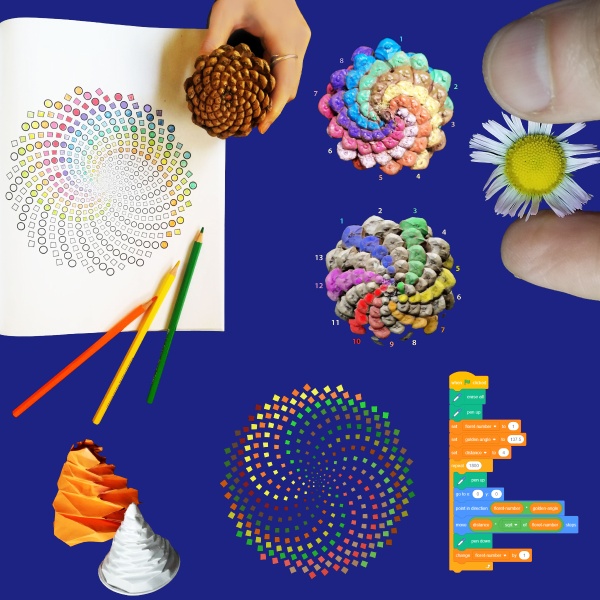
Secret Code of Flowers: Golden Ratio Spirals
Discover the golden ratio and spirals in nature, with drag and drop code, painting spirals, a real daisy, science booklet, origami, real pine cones, and mobile. Our materials, supplemented with movies and computer models, give you an intuitive feel for the golden angle, irrational numbers, and why the number of spirals in flowers and pine cones are Fibonacci numbers.
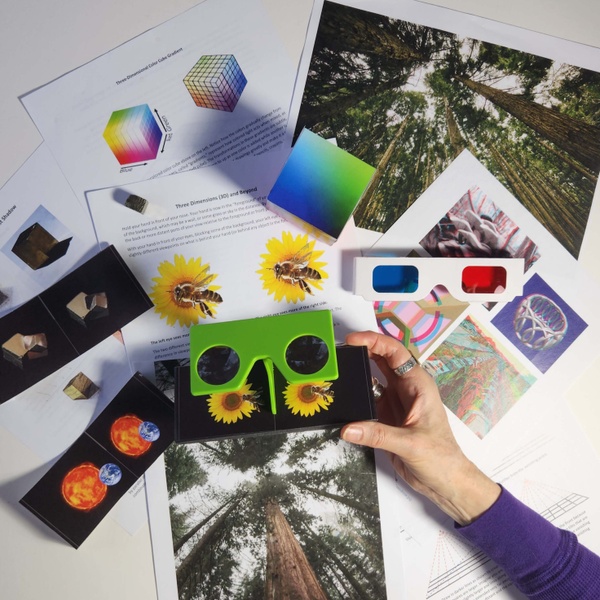
Patterns in Perspective: deCODING 3D
With 3D glasses, VR (virtual reality) glasses, and 3D modeling tools, you learn about perspective drawing, parallax and other 3D mechanisms. Comes with 3D slides, drawing exercises, code and bonus interactive 3D images online with your phone. You go beyond the three dimensions, adding three color dimensions, learning how computers generate shades of colors.
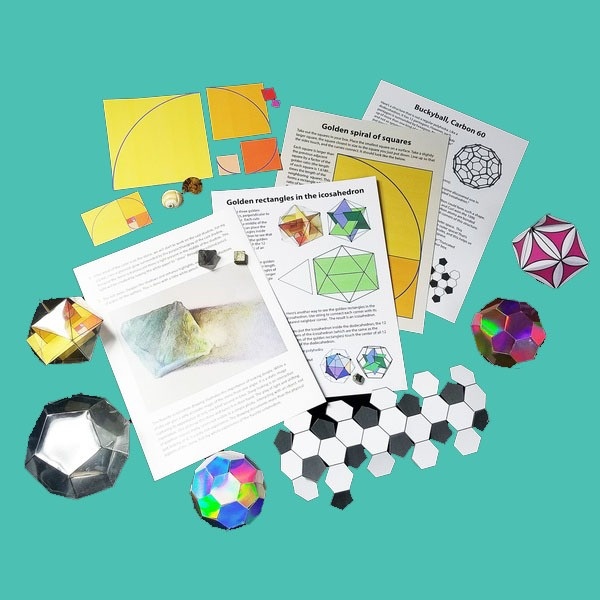
Simplicity of Symmetry: Polyhedra in Nature
Explore elegant symmetrical patterns constructed with simple rules. These include sparkly and crystal clear “Platonic solids" and logarithmic spirals. See these patterns in the enclosed real fluorite crystal and an ammonite fossil. Make these patterns with easy drag & drop code.
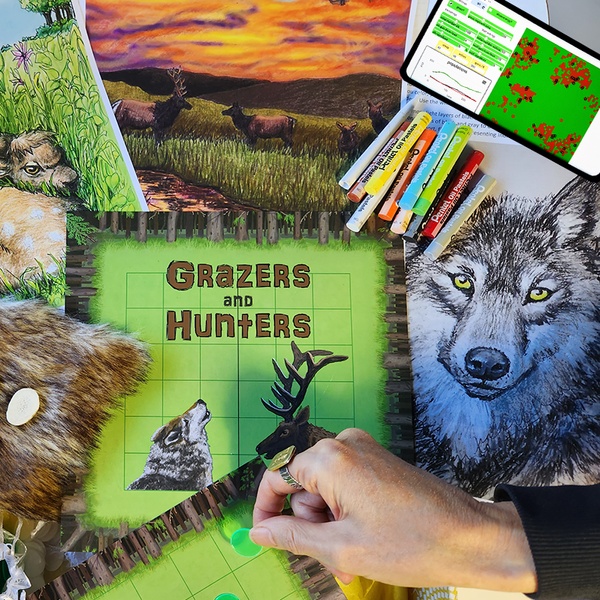
Grazers and Hunters: Art & Science of Predator-Prey Ecosystems
Look deeply at the beautiful patterns of elk and wolves, with art and science. Draw the fur patterns with pastels. Get a feel for the ecosystem with a dynamic game, where you try to gain the most elk and grass through strategic grazing and hunting. The beautiful cardboard game has a code version, which is a model of a predator-prey ecosystem. Start with easy drag and drop code, and move onto analysis.
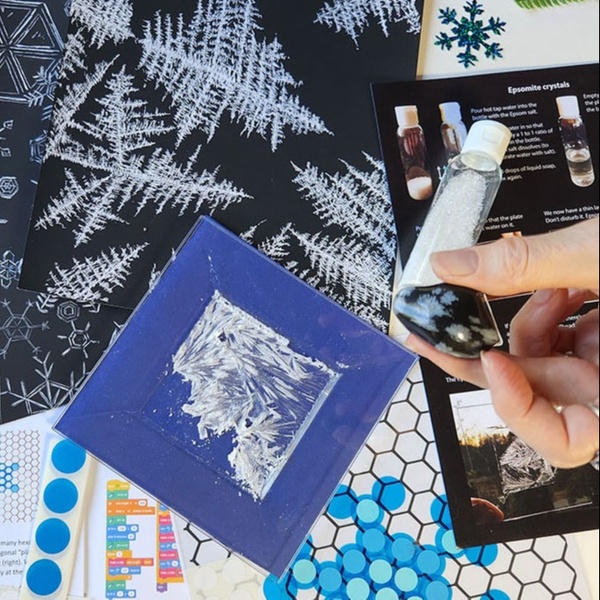
Frozen Fractals: deCODING snow patterns
Explore fractal patterns of snowflakes, frost fern and crystals. Draw those patterns on a scratch board. Model them with simple drag and drop blocks. Make snowy frost fern salt crystals in minutes. Look deeply at nature's fractals. Examine the simple rules that give rise to frozen fractals and similar life patterns, like trees and ferns. See that pattern on the included snowflake obsidian. All needed materials included.
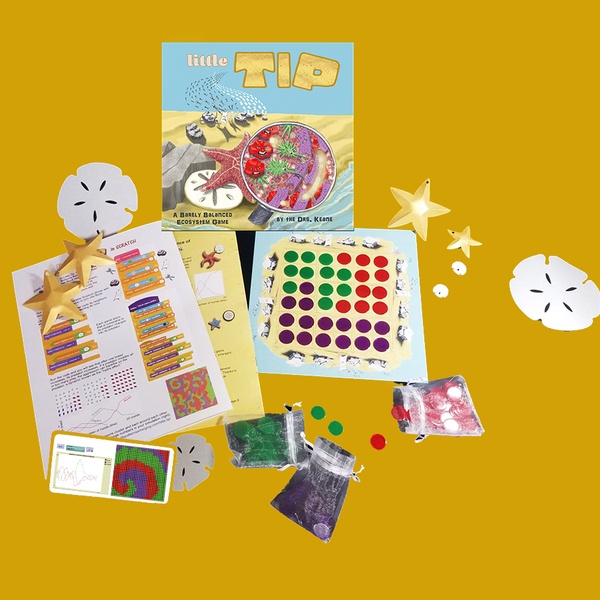
deCODING Ecosystem Balancing and Tipping
Discover the beauty of ecosystems with art, models, and games. The game is a barely balanced ecosystem. Try to tip it in your favor. Comes with coding blocks, instructional movies, online computer models, real sand dollar, paper starfish mobile, colored pencils, art instruction for underwater scene.
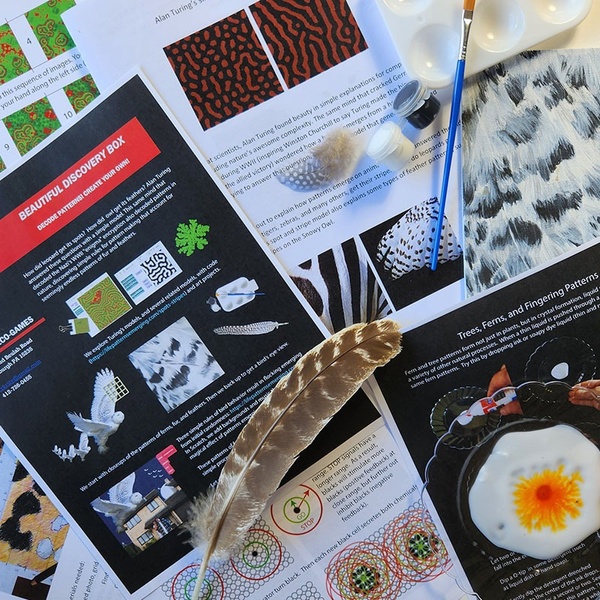
deCODING nature's spots & stripes with art & science
With art and code, explore simple models generating diverse patterns on animal fur, feathers, and flocks. Learn techniques of painting and sketching with art projects celebrating the patterns. Includes models, real feather, transparent grid, paint, canvas, dye, dish and glue. Paint a closeup of a snowy owl, and use code to model of flock. For fun we model an owl flock from Harry Potter.
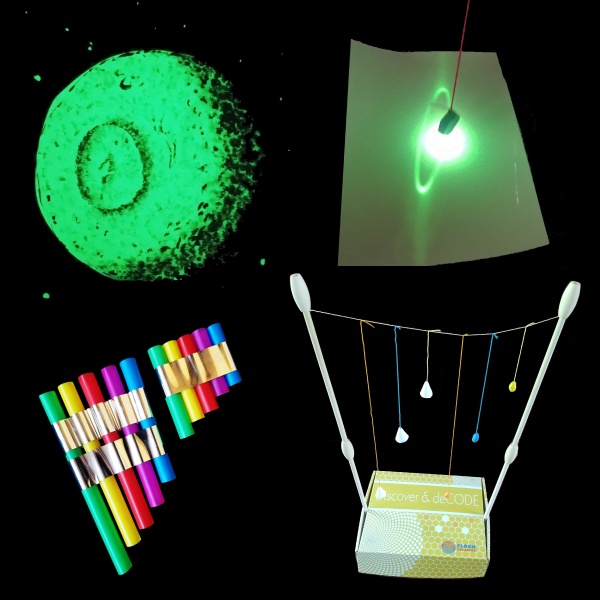
Heavenly Harmony: Pendulums and Music of the Spheres
Find out what orbits in our solar system have in common with music. This box includes harmonic motion pendulums, paint for a glow in the dark Mimas moon, a pendulum that glows its oscillations, code, pan pipes that illustrate mathematics of music. As in music, the solar system orbits show ratios of two to one, three to two and four to three.
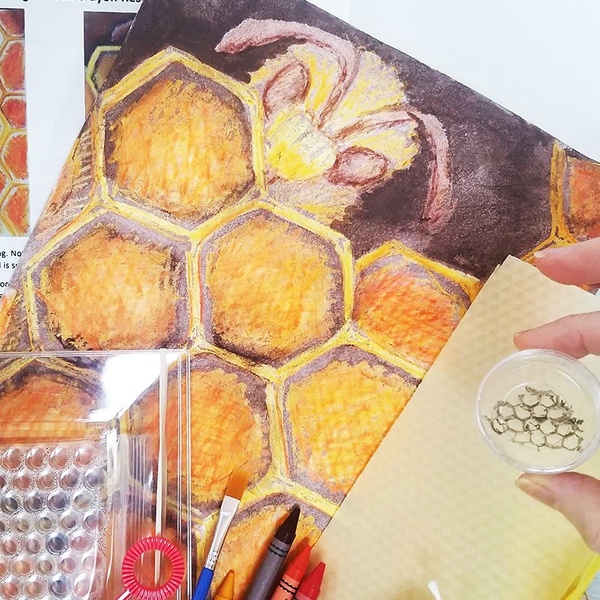
DeCODING bubbles and bees
Discover why bees make hexagons. By making containers, explore why hexagons are the most efficient use of material. See soap bubbles form hexagons when packed. With a wax resist drawing of a honeycomb, celebrate the beautify of beehives and explore the hydrophobic nature of wax. Comes with wasp nest sample, and sheet of beeswax.
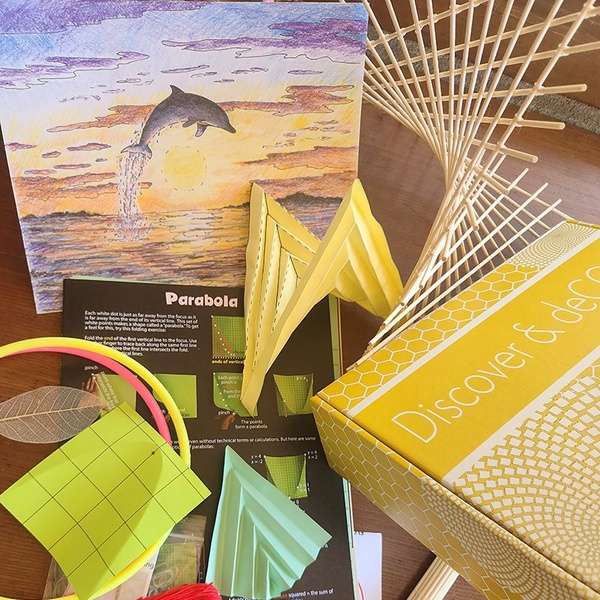
Parabolas, Paraboloids, and Hyperboloids
The parabola is a pattern hidden throughout nature. Get an intuitive feel for this by making 3D models of parabolas, paraboloids, and hyperboloids, using cone slices, 3D flexible origami and bouncy stick frame models. Also includes beautiful leaf skeleton, our science booklet and drag and drop code simulating parabolas, paraboloids, and hyperboloids.
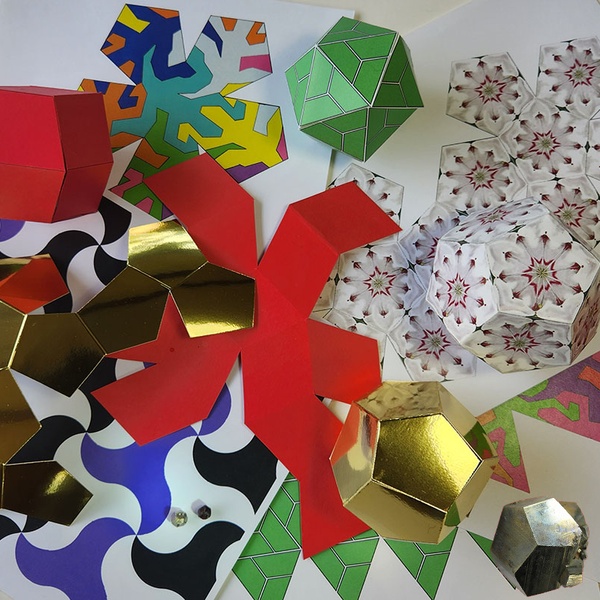
Decoding Nature's Broken Symmetries
From flowers to crystals to atomic particles, nature abounds with broken symmetries. Play with floral shapes, making 3D models with broken symmetry, the Trillium flower, the hexagonal Mountain Laurel. Included is a rhombic dodecahedral garnet stone, a pyritohedral piece of iron pyrite, and large models of each (both dodecahedra with some symmetry broken). See how reducing symmetry opens up new practical possibilities and new beauty!
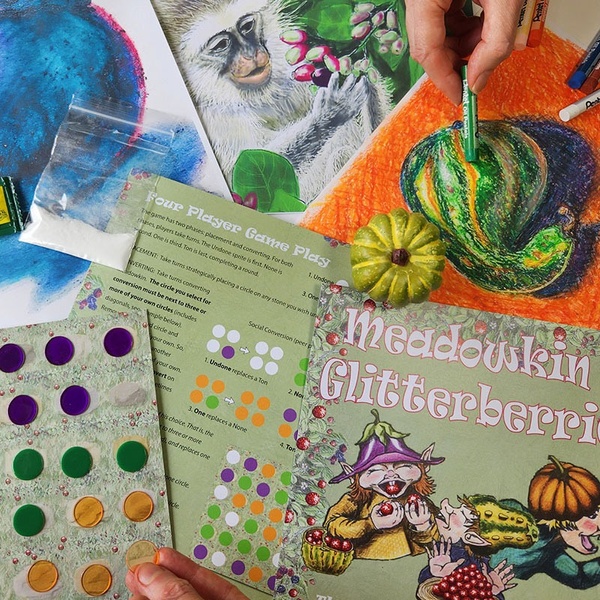
deCODING Food Ecosystems
When a Vervet monkey sees several others eating a blue berry, he tends to eat blue berries. If the monkey moves to a new group where they eat pink berries, the Vervets will eat pink berries. We use simple Scratch code to model this "monkey see monkey do" behavior. We also explore the beauty of the Vervets and their berries with a drawing projects. We'll also paint a blueberry using blueberry pastes prepared as acid and base mixtures.
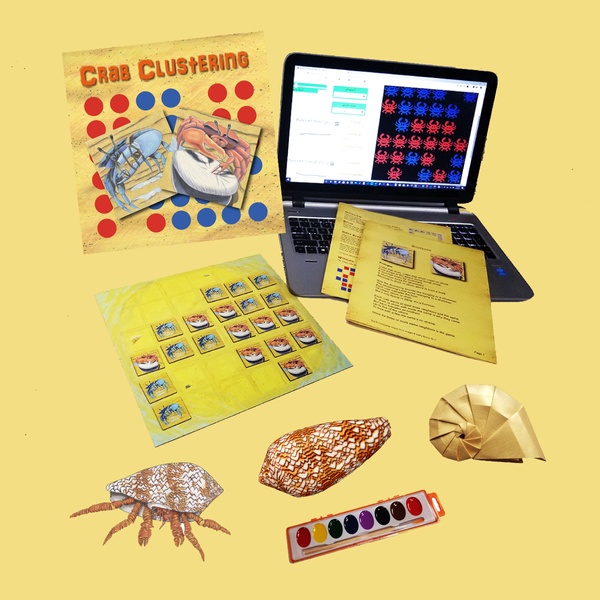
Decoding Clustering in Shells & Crabs
Birds of a feather flocking together, a kind of segregation, generates patterns of spots and patches. Fiddler crabs flock in this way, for example. More complex patterns of spots and stripes occur on the surface of shells. This box explores these patterns with crabs, shells, and a game model of segregation. Includes an easy model of segregation and a board game model of crab shell patterns. The drag & drop code matches the board game and shell drawing exercise!
Beautiful Discovery appears in these collections…

Bring in 2025 with Free Shipping

Back to School under $50
Editor's pick

Back to School Essentials: Educational Kits and School Supplies
Editor's pick

Geeky Boxes for Dads Who Love to Play
Editor's pick

Gifts for Nature-Loving Moms
Editor's pick
